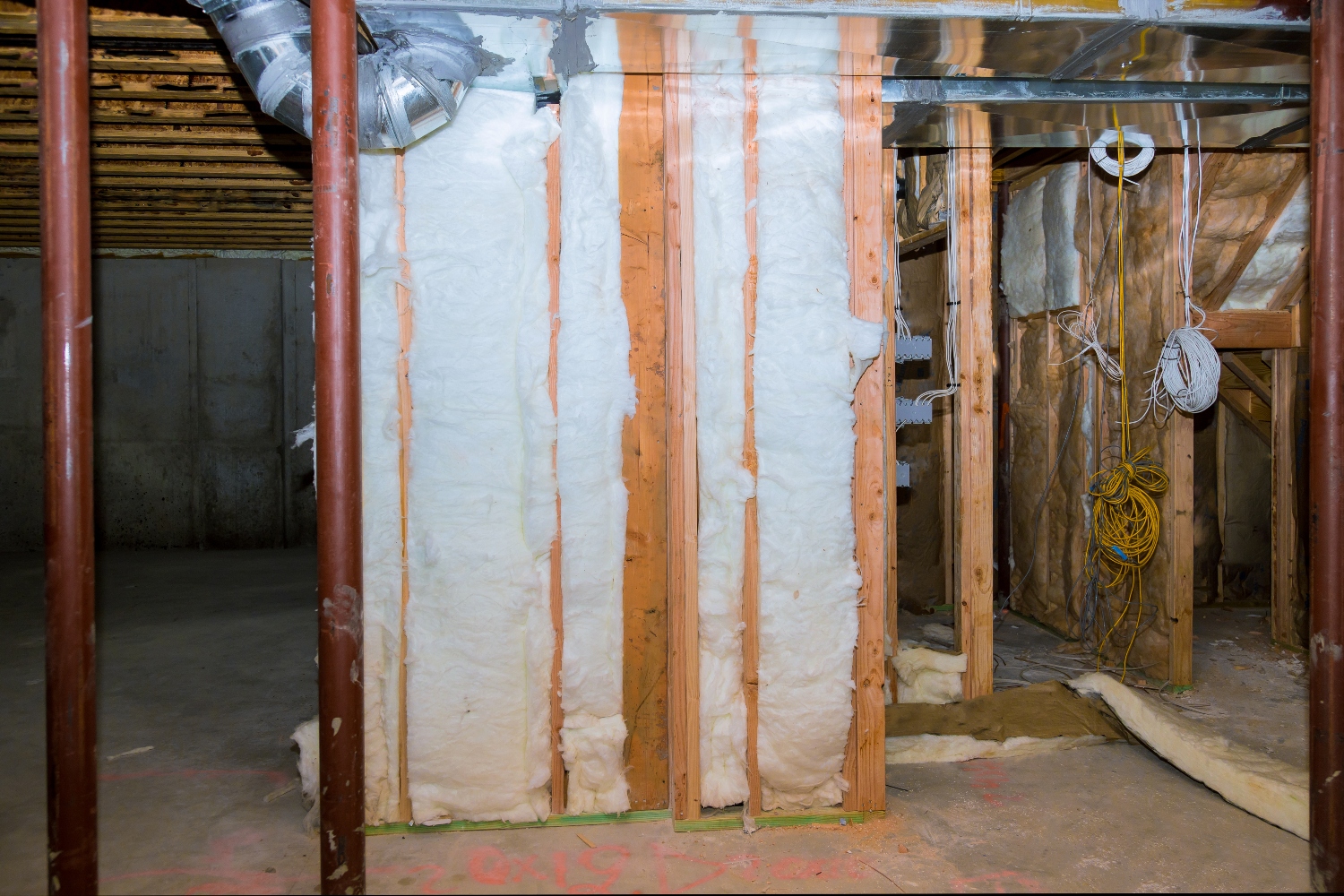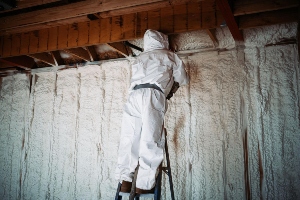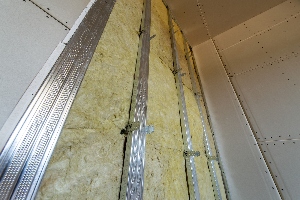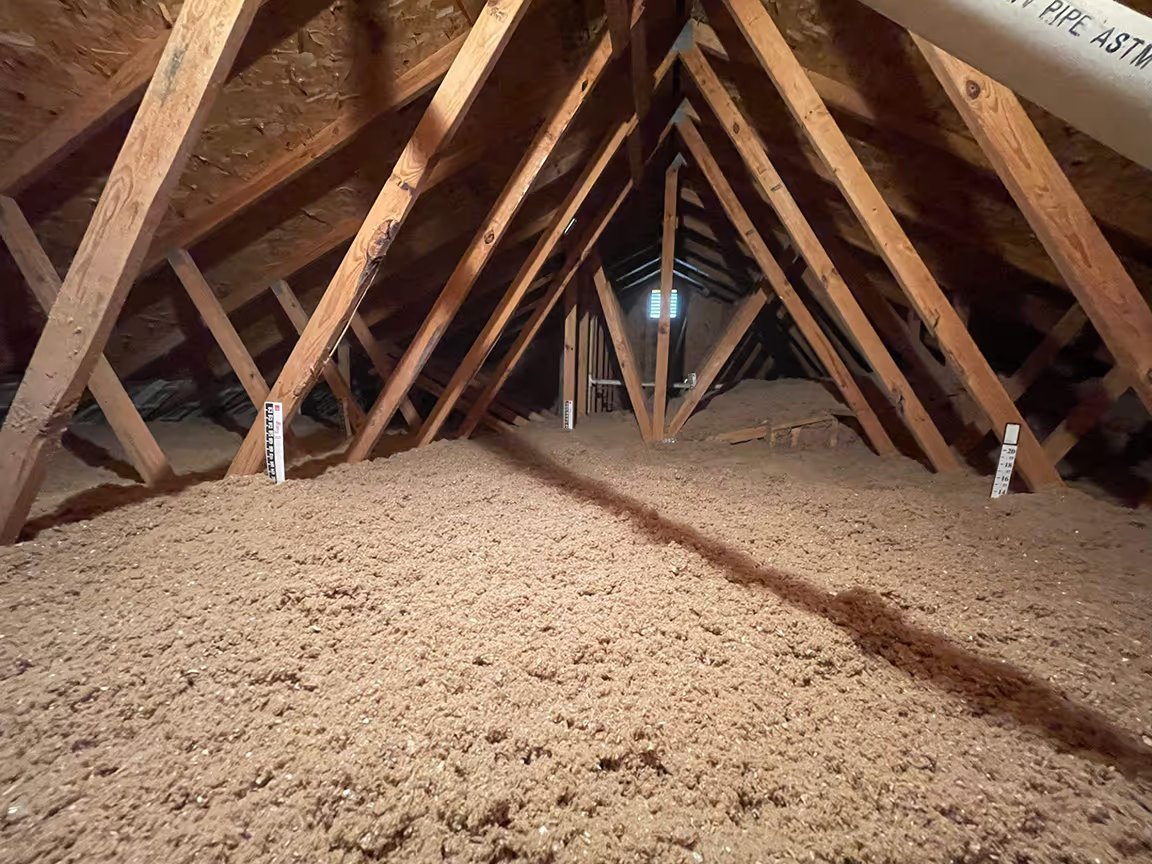Insulation for old houses presents unique challenges, but it's entirely possible to improve energy efficiency without compromising character or undertaking major renovations. Old homes often have charm and architectural details worth preserving, which is why retrofit insulation solutions need to be carefully selected.
You can successfully insulate an old home by choosing appropriate materials like dense-pack cellulose, spray foam, or exterior insulation, and using techniques that don't require tearing down walls or damaging original features. These approaches allow you to maintain your home's historic elements while significantly improving comfort and reducing energy costs.
We recommend starting with a thorough evaluation of your current insulation and sealing any air leaks before choosing an insulation method. The best solution for your old house will depend on your specific situation, including wall construction, climate, and which architectural elements you want to preserve.
This guide explores the best insulation materials and techniques for retrofitting, offering expert insights on how to reduce energy costs, prevent drafts, and maintain your home’s original character, all without major renovations.
Here's what you need to know:
- Why old homes lose heat and how insulation solves it
- Best insulation types for retrofitting old homes
- How to insulate different parts of an older home
- What to expect during an old home insulation project
Let's dive in!
Why old homes lose heat and how insulation solves it
Older homes were built with different construction standards than we use today. They often lack proper insulation and have numerous pathways for heat to escape, leading to energy inefficiency and higher utility bills.
According to the U.S. Department of Energy, properly insulating older homes can reduce heating and cooling costs by up to 20%, especially when combined with effective air sealing and moisture control measures.
Common issues in pre-1950s construction
Pre-1950s homes typically feature solid masonry walls, uninsulated attics, and single-pane windows. These materials and construction methods prioritized durability over thermal performance.
Many older homes have lath and plaster walls without any cavity insulation. This creates a direct pathway for heat transfer through the building envelope.
The materials used—like stone, brick, and old-growth timber—are sturdy but poor insulators on their own. Without a thermal barrier, these homes experience significant temperature fluctuation.
Air leakage around doors, windows, and where utilities enter the home compounds these issues. The resulting drafts make homes uncomfortable and strain heating systems.
Where old houses leak the most energy
Attics and Roofs: Heat rises naturally, making poorly insulated attics the biggest source of energy loss. Many old homes have minimal attic insulation or none at all.
Walls: Solid masonry walls without insulation transfer heat easily. Older frame houses may have empty wall cavities that allow significant heat loss through conduction.
Floors: Uninsulated floors over basements, crawlspaces, or soil can account for 10-20% of a home's heat loss.
Windows and Doors: Original single-pane windows and doors with worn weatherstripping create drafts and cold spots throughout the house.
Penetrations: Chimneys, plumbing vents, and electrical outlets often have air leaks around them that compromise the thermal envelope.
Benefits of insulating without altering character
Proper insulation creates a more consistent indoor temperature year-round. Rooms stay warmer in winter and cooler in summer, improving overall comfort.
Energy bills can decrease by 30-50% with comprehensive insulation upgrades. This makes the initial investment worthwhile through long-term savings.
We can use modern insulation techniques that respect a home's historic character. Materials like blown-in cellulose can be added without removing original plaster walls.
Insulation also helps preserve historic elements by preventing moisture problems. Maintaining proper temperature and humidity levels reduces wood rot, paint peeling, and structural damage.
Adding insulation improves indoor air quality by reducing drafts that carry dust and allergens. This creates a healthier living environment while maintaining the home's historic charm.
Best insulation types for retrofitting old homes
Choosing the right insulation for your old home involves balancing effectiveness, installation challenges, and preservation of historic features. Several proven options can dramatically improve energy efficiency while respecting your home's character.
Blown-in cellulose for walls and attics
Cellulose insulation ranks among the top choices for old homes due to its excellent performance and minimal invasiveness. Made primarily from recycled newspaper treated with borate for fire and pest resistance, it offers an R-value of 3.2-3.8 per inch.
We find cellulose particularly valuable for retrofits because it can be blown into closed wall cavities through small holes (typically 1-2 inches) that are easily patched afterward. This means no major demolition to your vintage plaster walls.
In attics, loose-fill cellulose creates a consistent thermal barrier that conforms around obstructions like wiring and joists. Its density helps prevent air movement, which significantly improves thermal performance beyond what the R-value alone suggests.
Another advantage: cellulose effectively dampens sound transmission between rooms, a welcome bonus in old homes with thin walls.
Spray foam for tight air sealing (and where to avoid it)
Spray foam insulation provides exceptional air sealing capabilities with R-values ranging from 3.7-6.5 per inch. The higher values come from closed-cell foam, which also acts as a vapor barrier.
We recommend spray foam for rim joists, attic hatches, and around window frames where air leakage is common. Its ability to expand and seal irregular spaces makes it perfect for these applications.
Caution areas:
- Historic wood frames (can cause moisture trapping)
- Spaces needing ventilation (like some roof assemblies)
- Areas where future access might be needed
While effective, spray foam requires professional installation and costs more than other options. Its permanence also makes it problematic in areas where wiring or plumbing might need future access.
For old homes with potential moisture issues, open-cell foam may be preferable as it allows some vapor transmission rather than trapping moisture in walls.
Injection foam for hard-to-access cavities
Injection foam offers a middle ground between blown cellulose and spray foam. This specialized solution gets pumped into closed wall cavities through small holes, expanding to fill the space completely.
With R-values around 4-5 per inch, injection foam provides better thermal resistance than cellulose while maintaining a relatively affordable price point. It works particularly well in:
- Brick homes with furring strips
- Homes with narrow wall cavities
- Areas where dense-pack cellulose might settle
The installation process maintains the integrity of plaster walls and original trim. Small injection holes can be patched so they're practically invisible after the work is complete.
Unlike spray foam, many injection foams remain somewhat flexible, allowing for the natural movement that occurs in old homes without creating stress points.
Batt insulation for accessible areas
Fiberglass or mineral wool batts remain practical options for areas where walls are open or easily accessible. Modern batts achieve R-values of 3.1-4.3 per inch and come in various thicknesses to fit standard framing.
We recommend batts for:
- Attic floors between joists
- Knee walls in finished attics
- Basement ceilings
- Walls during renovation projects
The key advantage is ease of installation—many homeowners can handle this as a DIY project. Batts also allow for straightforward removal if access to systems is needed later.
For old homes, choose unfaced batts when possible. This allows the wall assembly to dry in both directions, which is important in structures built before vapor barriers were standard.
How to insulate different parts of an older home
Insulating an older home requires different approaches for each area. Proper insulation not only improves energy efficiency but also preserves the character and structural integrity of historic buildings when done correctly.
Attics and roof slopes: critical heat loss zones
Attics are responsible for approximately 25% of heat loss in older homes, making them priority zones for insulation. We recommend starting with air sealing before adding insulation materials.
For accessible attics, loose-fill cellulose or fiberglass insulation works well. Aim for R-49 to R-60 in colder climates. Make sure not to block soffit vents, as proper ventilation prevents moisture problems.
For cathedral or sloped ceilings, consider spray foam between rafters or rigid foam boards. These options provide high R-value without excessive thickness.
Important safety note: Always install baffles to maintain airflow and prevent overheating of roofing materials. Keep insulation away from recessed lights and other heat sources unless they're IC-rated (insulation contact).
Walls without demolition: drill-and-fill techniques
Insulating walls in older homes is possible without removing plaster or drywall using drill-and-fill methods. This technique involves drilling small holes (typically 1-2 inches) in walls and injecting insulation.
Best materials for drill-and-fill:
- Dense-packed cellulose (our top recommendation)
- Blown-in fiberglass
- Injectable foam products
The process works by drilling holes at the top of wall cavities, between studs. After insulation is blown in, the holes are patched and repainted. For homes with brick exteriors, insulation can often be installed from the outside by removing and replacing single bricks.
We've found this method particularly effective for older homes with balloon framing. Remember to check for knob-and-tube wiring before insulating, as covering it with insulation can create fire hazards.
Crawl spaces and basements: moisture + temperature control
Insulating below-grade spaces requires addressing both temperature and moisture control. For crawl spaces, we recommend the "sealed crawl space" approach rather than insulating between floor joists.
Crawl space insulation steps:
- Install a vapor barrier on the ground (6-mil polyethylene)
- Seal all vents and air leaks
- Add rigid foam board insulation to foundation walls (R-10 minimum)
- Consider a small dehumidifier for very damp areas
For basements, insulate the walls rather than the ceiling if you want a warmer basement. Rigid foam boards work well, either glued directly to foundation walls or installed between furring strips.
Be cautious of using fiberglass batts in these areas as they can absorb moisture and become ineffective. Spray foam insulation provides excellent air sealing and moisture resistance but costs more.
Windows, doors, and rim joists: sealing the small gaps
Don't overlook smaller areas that can cause significant heat loss. Historic windows can be made more efficient without replacement through several methods:
For windows:
- Install weatherstripping
- Add storm windows
- Use removable window insulation film in winter
- Apply rope caulk to gaps
Doors benefit from weatherstripping and door sweeps. These simple fixes can dramatically reduce drafts.
Rim joists (where floor joists meet exterior walls) are often forgotten but critically important. These areas can be insulated with cut-to-fit rigid foam boards sealed with caulk or spray foam. This simple upgrade often provides excellent return on investment.
For extra protection, install foam gaskets behind outlet and switch plates on exterior walls. These small interventions add up to meaningful energy savings without major renovations.
What to expect during an old home insulation project
Retrofitting insulation in an older home requires careful planning and consideration of the structure's unique characteristics. The process involves several key stages that will transform your home's comfort and energy efficiency while preserving its character.
Inspection and choosing the right approach for each area
A thorough home energy audit is the essential first step for any insulation project. This assessment identifies existing insulation levels, air leakage points, and structural considerations unique to your old home.
Different areas of your house may require different insulation strategies. Attics typically accept blown-in cellulose without much disruption. Walls might benefit from drill-and-fill techniques using dense-pack cellulose or foam injection. Basements and crawlspaces often need specialized moisture-resistant options.
Key considerations during inspection:
- Age and condition of existing walls and finishes
- Presence of knob-and-tube wiring (requires special handling)
- Moisture issues that need addressing before insulation
- Historic elements that should be preserved
Timeline, prep, and what stays intact
Most retrofit insulation projects take between 2-5 days depending on home size and complexity. Preparation typically involves moving furniture away from exterior walls and clearing access to work areas.
The good news is that modern insulation methods like blown-in cellulose can be installed without removing drywall or plaster. Technicians drill small holes (usually 1-2 inches) that are later patched and painted. Interior and exterior finishes remain largely untouched.
Before work begins:
- Clear valuables from work areas
- Discuss access requirements with your contractor
- Plan for some noise and minor dust during the process
How modern insulation improves comfort and value
We've seen properly insulated old homes experience temperature regulation improvements almost immediately. Modern materials like dense-pack cellulose and spray foam create thermal barriers that older homes were never designed with.
Beyond comfort, you'll notice reduced drafts and more consistent temperatures throughout your home. Many homeowners report quieter interiors as insulation absorbs sound transmission from outside.
Energy savings typically range from 20-30% on heating and cooling costs. This efficiency boost increases your home's market value while preserving its historic character. The investment typically pays for itself within 5-7 years through reduced utility bills and increased property value.
Conclusion
Insulating an old house requires careful planning but brings significant benefits. Better insulation means lower energy bills, improved comfort, and a smaller carbon footprint while preserving your home's historic charm.
The best approach depends on your specific situation. Dense-pack cellulose offers an eco-friendly option that works well in wall cavities without removing drywall. Spray foam provides excellent air sealing for those hard-to-reach spaces.
We recommend starting with an energy audit to identify problem areas. Focus first on sealing air leaks around windows, doors, and other openings before adding insulation.
Remember that moisture management is crucial in older homes. Proper ventilation and vapor barriers help prevent mold and structural damage when adding new insulation.
Consider working with contractors who specialize in older homes. Their expertise can help navigate challenges unique to historic properties while maximizing energy efficiency.
The investment in proper insulation pays off through enhanced home comfort, reduced utility costs, and preserved architectural character. With the right methods and materials, we can bring old houses into the modern era of energy efficiency without compromising their unique charm.
Schedule a professional insulation assessment with Terrain Insulation to find the most effective retrofit solution for your home’s unique structure.






